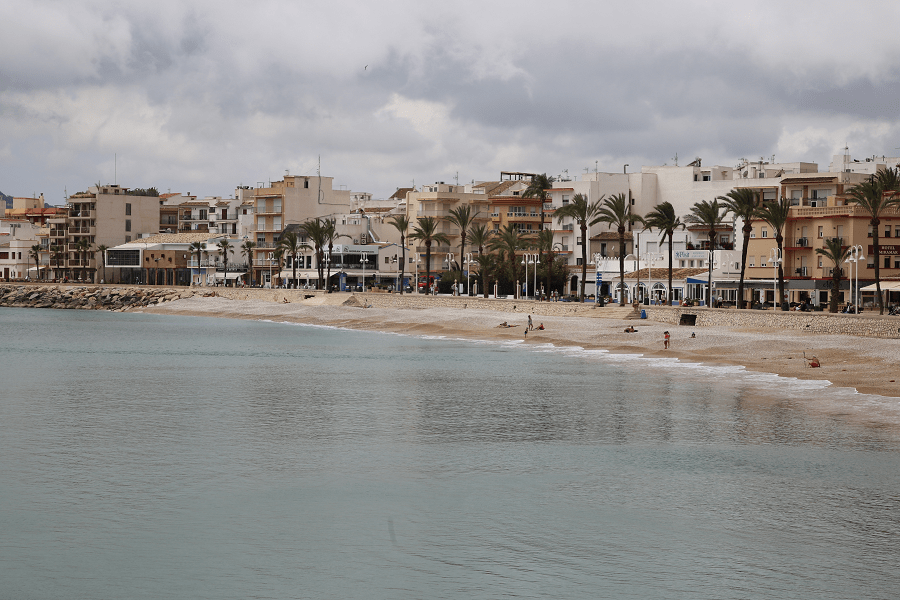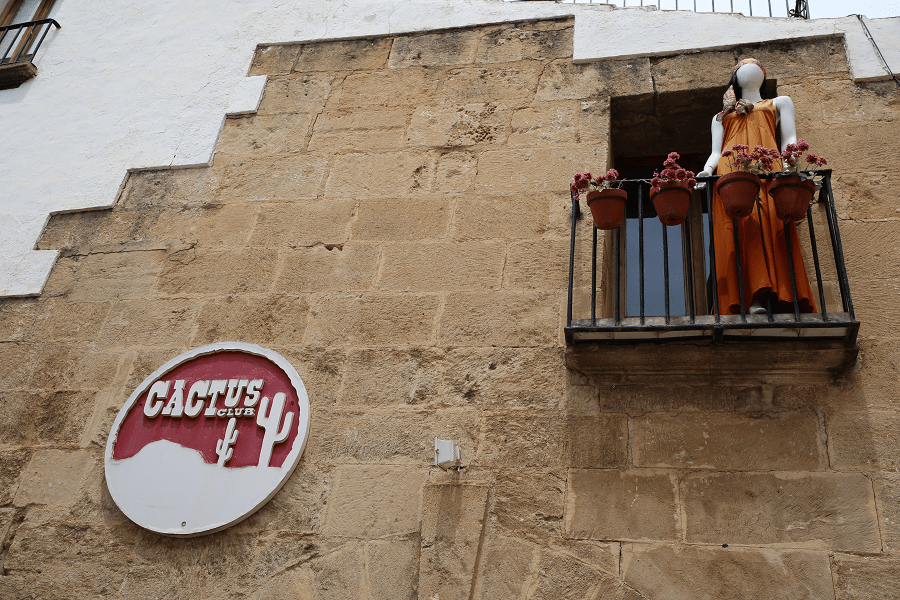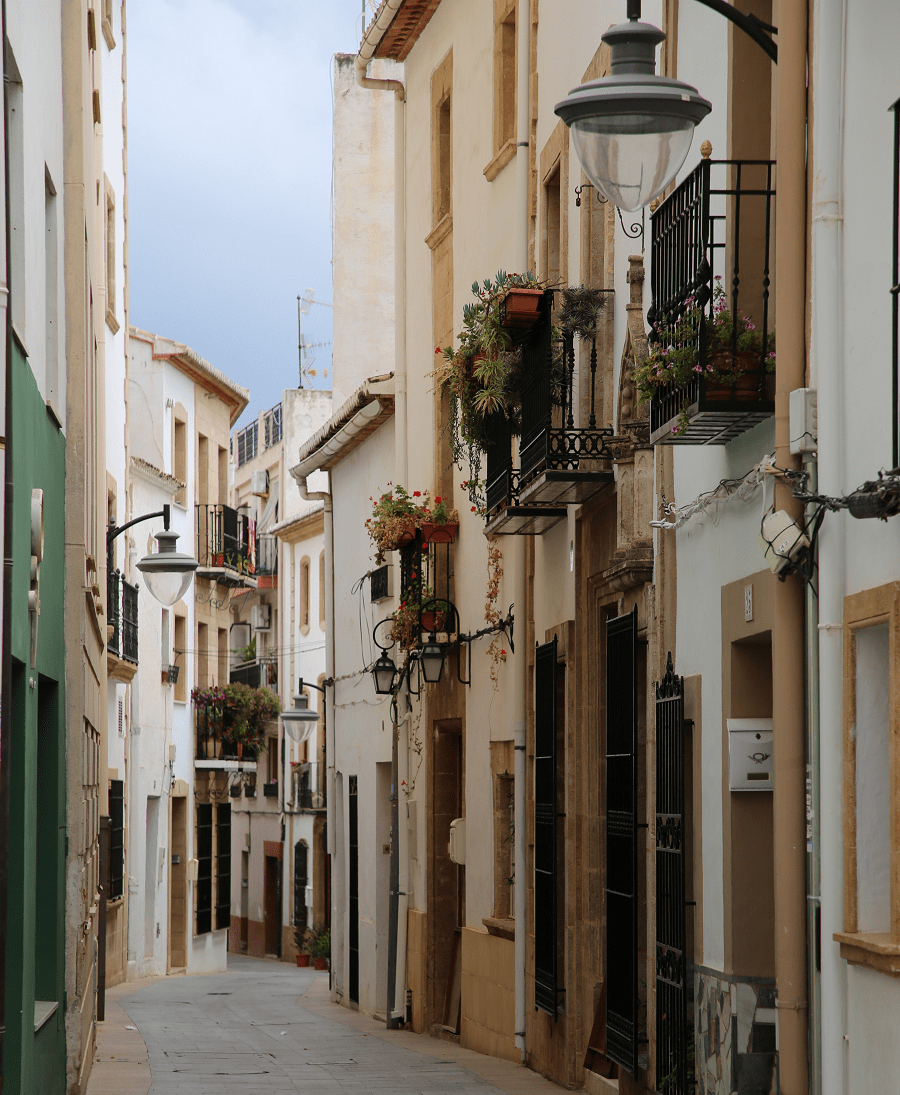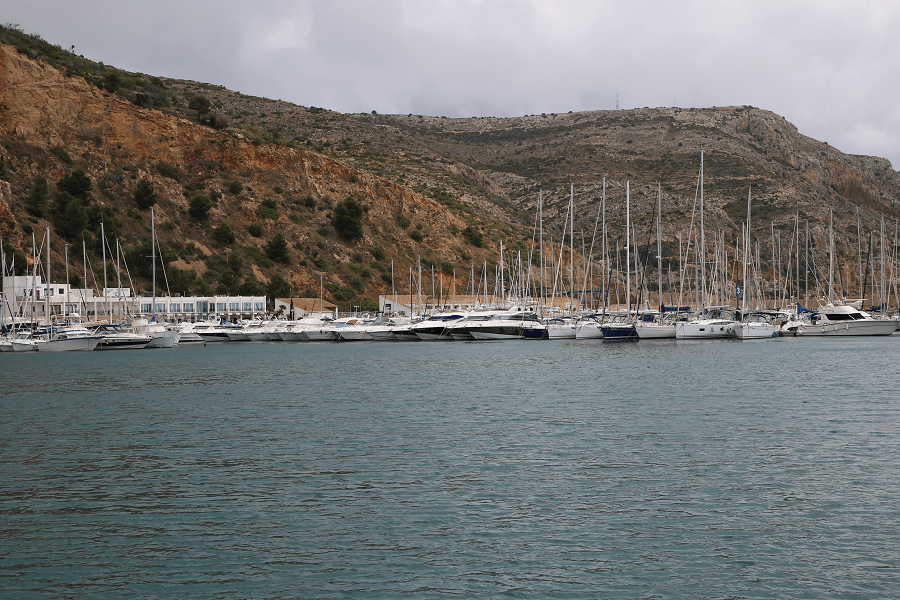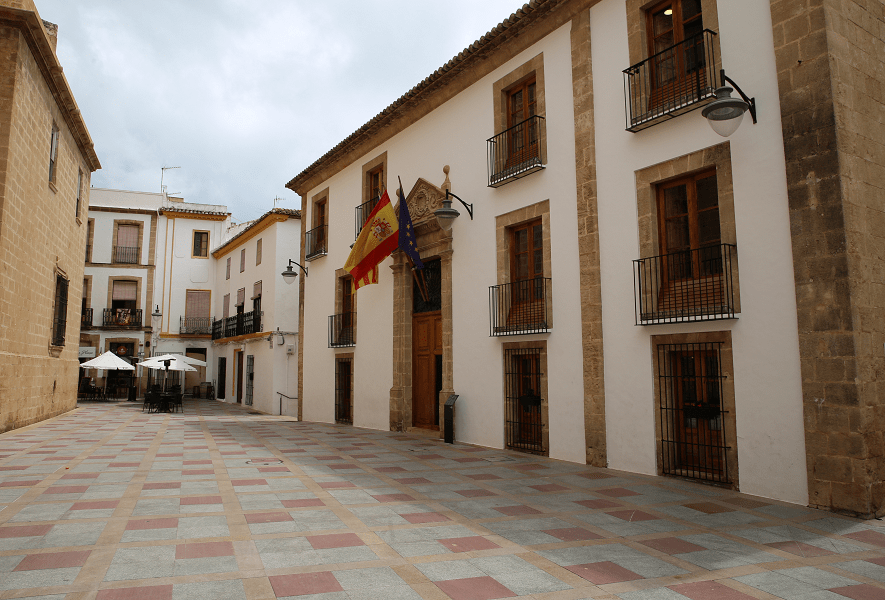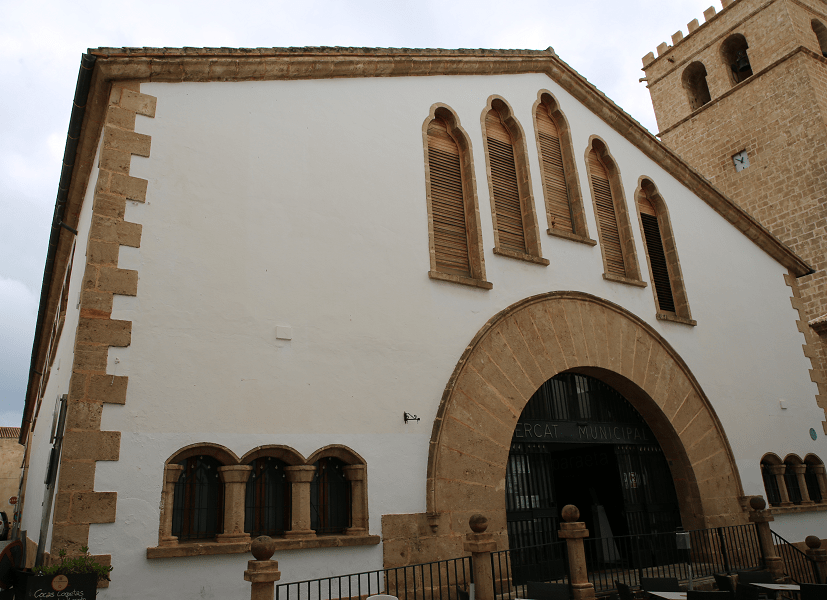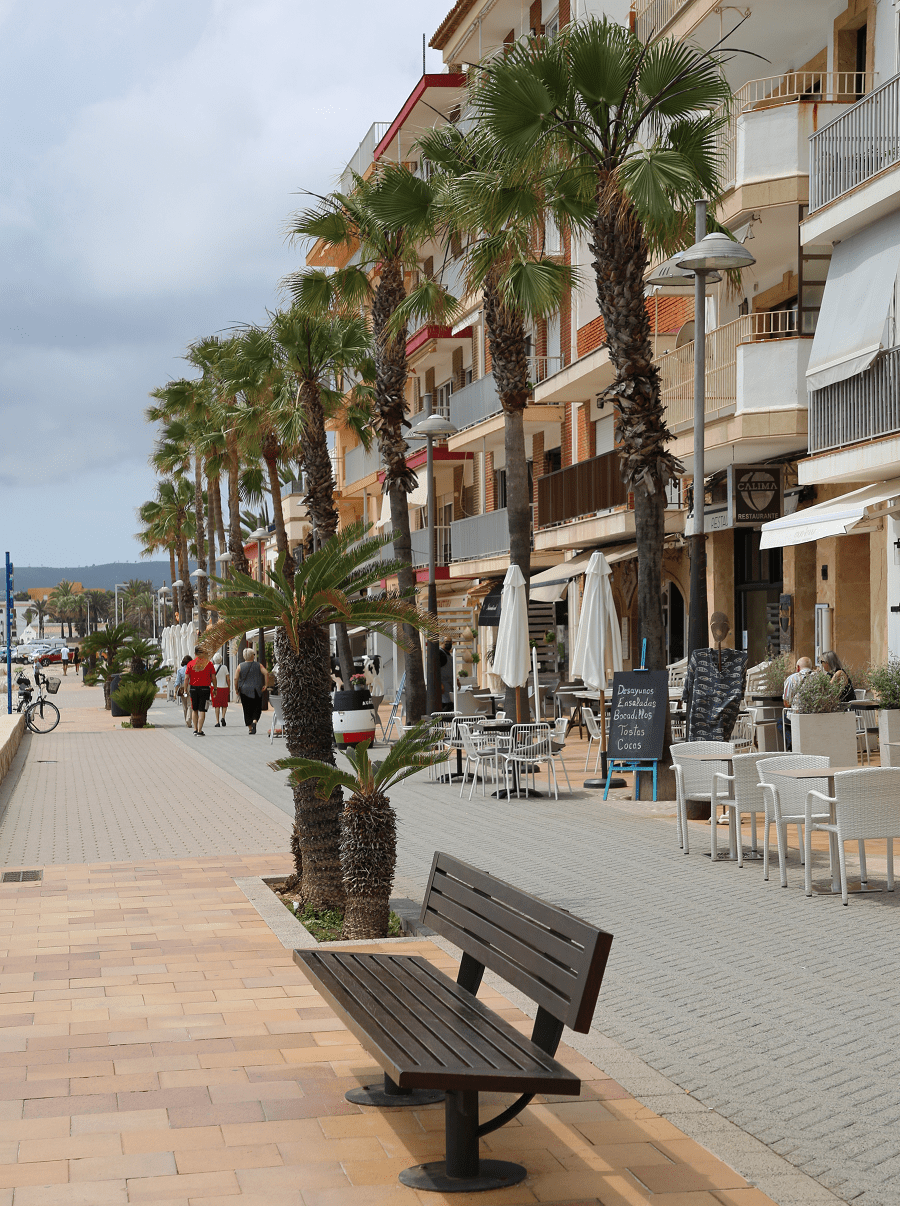Jávea (in Valencian and officially Xàbia) is a municipality in the Valencian Community, Spain. It is located on the north coast of the province of Alicante, in the Marina Alta region.
The island of Ibiza lies some 90 km to the east, and it can be seen on clear days. Flat, fertile agricultural land stretches for miles inland, criss-crossed by small streams and used primarily for growing citrus and olive trees. The coastline of Xàbia features four capes: Cabo de San Antonio, Cap de la Nau (the largest), Cap Negre and Cap Martí.
It’s a popular part of the Costa Blanca of the Mediterranean resorts of Spain.
Climate
According to a scientific study carried out in the 90s, Xàbia was considered the first best microclimate in the world, followed by Rio de Janeiro, you can enjoy a good temperature all year round with an average that oscillates 18 ° C. The proof of this is that it is a place chosen by foreign retirees to spend the rest of their lives. Half of its resident population and over two thirds of its annual visitors are foreigners.
The green color is the one that predominates in the landscape. Although it does not rain very often, Xàbia has a lot of water in its underground. One of the possible origins of the name of the municipality is Xábiga, from the Arabic, which means something like a well or cistern.
The rains occur with the Mediterranean precipitation regime, that is, with very intense rainfall in a very short time, with the months of September, October and November being the ones with the most rain. These typical Mediterranean precipitations are called “cold drop” (Sp. “gota fría”) in this area of Spain.
Languages
The official languages are Spanish and Valencian, very widespread among the natural population of the place. English is the most widely spoken foreign language, since Xàbia has a population of about 6,000 British residents a year, the highest in the Valencian Community. German is second foreign language (about 2,000 residents), far ahead of Dutch and French, Italian, Russian, etc.
Economy
Although at the beginning of the 20th century, Xàbia had an economy based on agriculture and fishing, it has been transformed at the end of XX century into a totally tourist economy, due to the favorable conditions it has.
Tourism and main attractions
- The most significant monument is the church of San Bartolomé in the center of town. This church dates from the XVIth century and combines the fortress (due to its square shape and its internal buttresses) and the sobriety of a church. Its bell tower stands out over the town. It is a National Monument since 1931.
- There are some towers that served as lookout against corsaires. When the watchman observed an enemy ship, he lit a torch and it was replicated in other towers until he was seen in the town where the bells were tolled as an alarm. Currently there are two watchtowers in perfect condition, one located in Portichol, next to the descent road to Barraca beach and the other, in El Ambolo, within a private property closed to the public.
- There is another church in the port, Nuestra Señora de Loreto or Parroquia del Mar, of more modern construction, but which comes from an old church that was built in the port area in the same century as the church of San Bartolomé. It has the peculiarity that the roof is like a ship’s keel, which can be seen from the road on the San Antonio slope, and it has external columns that make it the tentacles of an octopus.
- In Las Planas, going to Cape San Antonio, you can find the monastery of the “Virgen de los Ángeles”, a monastery of the Jerónimos order and run by a single monk who performs the work of giving mass, weddings, assist the sick and dying. In summer it receives colonies of foreign students. In July the festival of the “Virgen de los Ángeles” is celebrated for several days with festivals, meals, dances.
- Los Molinos, the municipality has a series of mills that are located on the plain, except for the mill known as La Safranera. These mills are authentic towers dating from the 14th century.
- The Montgó Massif Natural Park.
- Cabo de San Antonio Marine Reserve.
Beaches
From North to South of the coast:
Cova Tallada, located next to Cape San Antonio, is a cave that when you leave it has a beautiful small beach.
Pope’s cove located next to the port under the foothills of Cape San Antonio, owes its name to a priest who in ancient times, used to take a bath, since it is an area away from the sight of people. It is made of medium-sized stones, it has a restaurant nearby and to its right, going towards the cape, there are several coves and nooks where the “cave of love” is located.
Tangó cove is located in the vicinity of Pope cove.
La Grava, an extension of a medium stone beach, which is located to the right of the port. There is a promenade at its head and bars located along the promenade.
El Benisero, an extension of the previous beach, also formed by medium stone, has a delimited area for windsurfing, apart from the odd beach bar. It is also a place where the rental of jet skis is installed.
El Arenal, the only sandy beach and therefore the most famous and visited by tourists, is an area of less than 1 km of coastline, with fine, clean and well-cared for sand.
Cala Blanca, a small shell-shaped beach surrounded by rough rocks and a small area of large stones.
Granadella is the most beautiful pebble beach, suitable for diving. Awarded with the “Blue Flag” quality.
Primer Montañar is an urban pebble beach.
Ambolo is the only nudist beach.
Shopping
The most traditional shopping areas are in the center, in the old town and at Xàbia Port. Even if you do not find the most famous brands here, there are plenty of good stores that will surely give you a good shopping experience.
Just outside of Xàbia there is a large shopping mall.
Restaurants
There are four Michelin list restaurants in the city:
- BonAmb, Carretera de Benitachell 100, 98 – 129 EUR • Creative (Two stars!)
- Tosca, Avenida del Mediterráneo 238, 25 – 50 EUR • Mediterranean Cuisine, Modern Cuisine
- Es Tapa Ti, Paseo de David Ferrer 11, Traditional Cuisine, Fusion
- La Perla de Jávea, Avenida de la Llibertat 21, 25 – 50 EUR • Traditional Cuisine
Transport and how to get to?
By car:
From Valencia – 1 hr 21 min (112 km) via AP-7
From Alicante – 1 hr 7 min (85.7 km) via AP-7
From Madrid 4 hr 37 min (457 km) via A-3
Main information
Area: 69 sq. km (municipality)
Coordinates: 38°47′21″N 0°09′47″E
Population: 28 000 (municipality)
Languages: Spanish, Valencian
Currency: Euro
Visa: Schengen
Time: Central European UTC +1
See here best sea and ocean resorts of France and Spain (223 objects)



